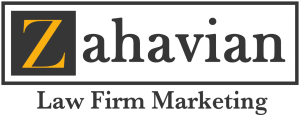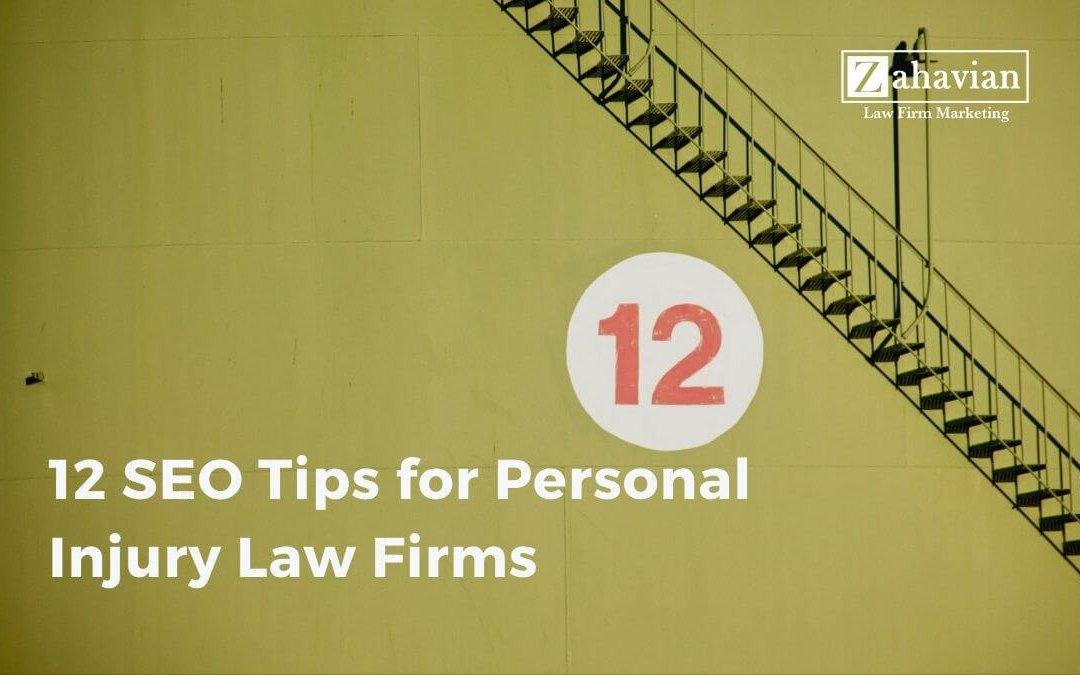Personal injury law firms are constantly hungry for new cases and therefore are looking for ways to grow new marketing channels as well as their existing ones. Search engine optimization is a perfect channel for personal injury lawyers that are willing to compete with the top firms in their market.
What is law firm SEO? Search engine optimization (SEO) is one of the most powerful, modern marketing channels that attorneys can use to attract more clients. Its activities include optimizing your website, content and online profiles so that your site ranks higher for its target keywords in search engine results.
While seo for personal injury lawyers is very competitive, it’s one of the best ways to build a large pipeline of new inquiries, calls and consultations that will result in signing up more cases.
12 SEO tips for personal injury law firms to boost rankings:
- Analyze your competition
- Optimize your website for mobile, speed and UX
- Implement a client review system
- Build Backlinks and Authority
- Create bigger, better practice area pages
- Add keywords throughout page content
- Add Schema markup to all pages
- Nail down your NAP
- Optimize your GMB Listings
- Remove duplicate and thin content
- Build lots of citations
- Boost engagement and pageviews
12 Tips to Skyrocket your Personal Injury Law Firm’s SEO
1. Analyze your competition
If you’re considering search engine optimization for your law firm, the first thing you should do is analyze your local market’s competition. SEO is very competitive for the personal injury vertical. Moreover, the competition in one city, state or locale won’t be the same as another.
Let’s take a look at an example.
| Keyword | KD Score | Competition | Estimated # Linking Websites |
| personal injury lawyer houston | 53 | Hard | 95 websites |
| orange county personal injury lawyer | 29 | Medium | 35 websites |
According to Ahrefs, the keyword “personal injury lawyer houston” has a keyword difficulty score (KD, which measures the difficulty of ranking for a keyword) of 53. Analysis shows that in order to rank for this keyword, you need backlinks from approximately 95 website to rank in the top 10 (not #1, but just the first page of Google). This is an oversimplification of the optimization process and competition, but provides an overview of the competition personal injury attorneys in Houston face.
An equivalent keyword in a different locale, “orange county personal injury lawyer”, has a KD score of 29 and requires links from only 35 websites to rank for this search term. Still competitive to rank for, but very different from Houston, TX’s competition.
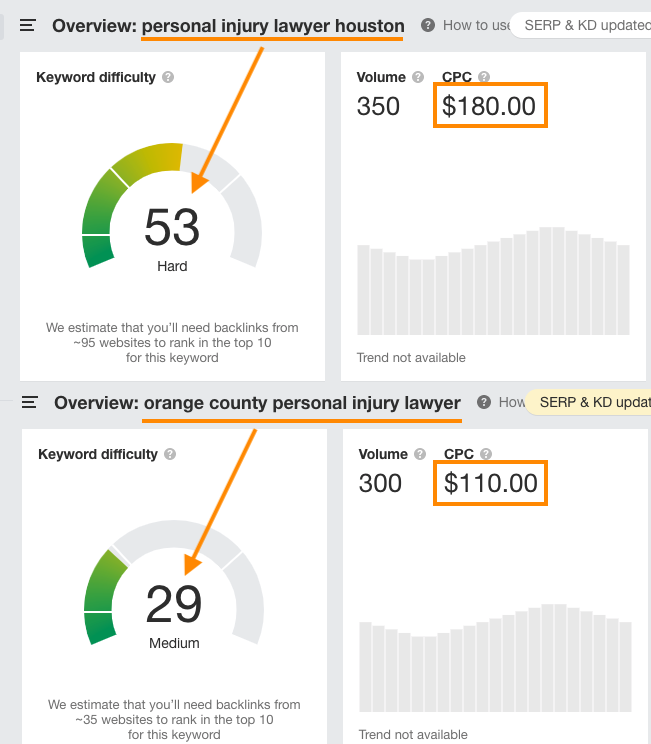
Another indicator of the difference in competition for these two terms is the estimated CPC (cost per click). Houston’s keyword has an estimated cost of $180 per click, compared to Orange County’s term with a ballpark CPC of $110. These two metrics together clearly show the difference in ranking difficulty and competition in local markets.
Do a thorough analysis of all target keywords for the areas you serve. One keyword comparison alone, like the example shown here is not enough to accurately gauge the competition. For instance, a close variant keyword, “personal injury attorney houston tx” has a KD score of 62 – 9 points higher than the first keyword we analyzed. These keywords seem virtually the same to you and I, but these terms wouldn’t have different difficult scores if Google treated them the same and ranked the exact same websites for these two very similar queries.
Of the groups of keywords you wish to rank for, find the KD score ranges, highlight the average and highest scores and make those your targets for search engine ranking purposes.
2. Optimize your website for mobile, speed and UX
Google is obsessed with providing their users with the best experience possible. That has a direct impact on which websites occupy page 1 rankings.
There are many aspects of your website that need to be optimized and addressed. Among them, the ones to focus obsessively on in 2021 and moving forward include:
Make your website mobile-first
Google now performs what is known as mobile-first indexing. This means that the search results shown on mobile are actually different from the results shown on Desktop. Your law firm’s website design should be designed first for smartphones and mobile devices, and desktop screens second. This means putting particular emphasis on loading speed (see next section below) and user experience on mobile.
Optimize your webpages’ loading times
Google is putting increased responsibility on webmasters and website owners to make sure their webpages’ speeds are ahead of the curve. Ideally, you want your website to load instantly. This makes for a better user experience, which will help you rank higher.
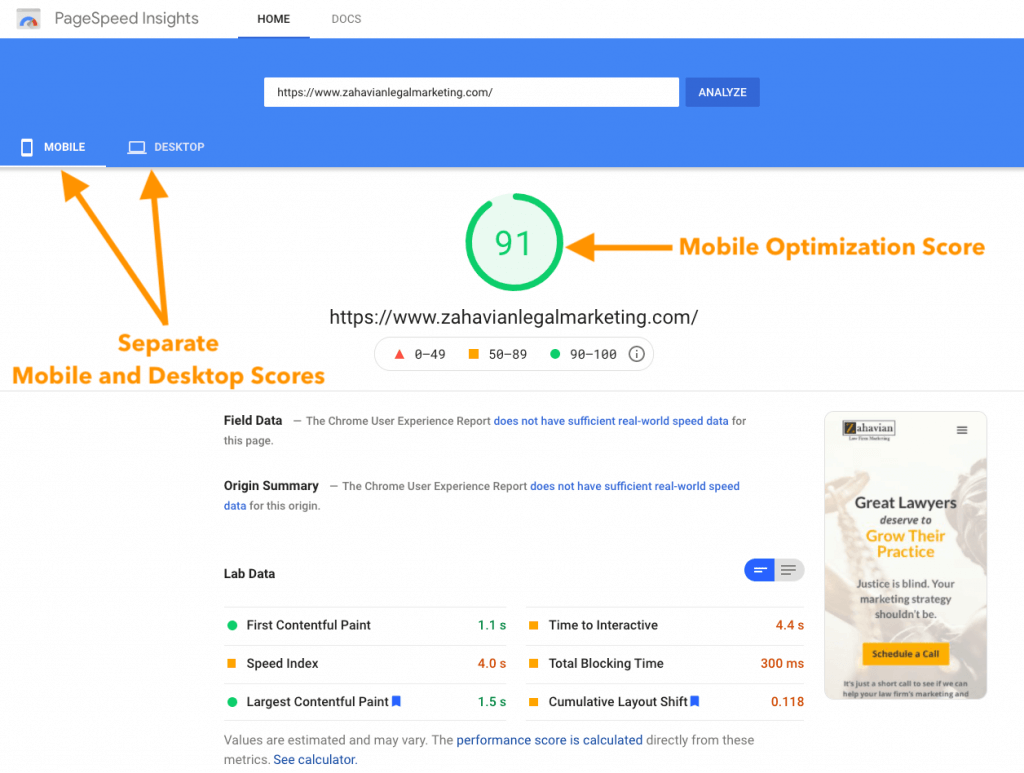
Use PageSpeed Insights to measure your site’s loading speed and related performance metrics. With concern to speed, the main metrics you want to optimize are the overall score (out of 100) and your Largest Contentful Paint (LCP). Your PageSpeed score should be above 90 and LCP is below 2.5 seconds.
Pass the Core Web Vitals Standards

Google’s Core Web Vitals are becoming a ranking factor in 2021. Using PageSpeed insights, you will want to focus on all three Core Web Vital metrics. In order to get the rankings “boost” for your website, all three metrics must be within Google’s “Good” range.
The 3 core web vitals and the metrics you need to achieve are as follows:
- Largest Content Paint (LCP) needs to be 2.5 seconds or less.
- First Input Delay (FID) must be 100 milliseconds or less.
- Cumulative Layout Shift (CLS) score should be less than or equal to 0.1
3. Implement a client review system
A critical part of your firm’s SEO campaigning is your ability to consistently solicit and acquire reviews on your online profiles, notably your Google My Business listings.
Many lawyers struggle with this, but a lot can be systematized and automated into your file workflow. If you use a cloud practice management system, it may have a feature built into help automate the review garnering process.
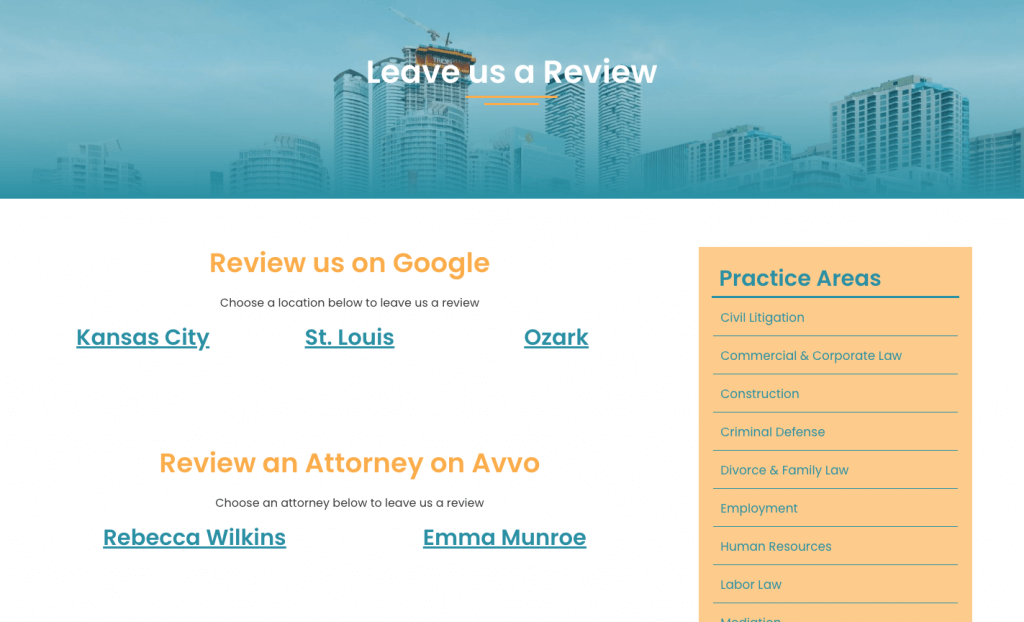
Alternatively, what we do for all of our clients is build a dedicated page on their website with links to their primary review profiles (i.e. Google, Facebook, Avvo, Yelp, etc.).
At some point during the case workflow, a lawyer, paralegal, case manager or assistant will send their client an email with a link to this page, where the client gets to choose the most convenient way for them to leave a review.
4. Build Authoritative Backlinks
If you’ve been learning about SEO for a while, you’ve probably discovered by now that link building is an essential part of any law firm’s ability to rank in a competitive market.
Many agencies today still use black-hat link building techniques, which we do not. This makes our job harder in the present, but easier in the long run – not to mention better for the lawyers that work with us.
Acquiring and earning the quality and quantity of backlinks that will rank you on page 1 for ultra-competitive keywords like “personal injury attorney san diego” and “car accident lawyer miami” is the single most difficult and time-consuming task in search engine optimization.
Beyond building links in directories that any and every law firm can easily obtain, authoritative links from editorial sources and local websites (in your area) are what will do the heavy lifting for getting you page 1 results.
5. Create bigger, better practice area pages
Aside from backlinks, the most important factors that Google looks at when determining which sites rank highest in their index for particular keywords is your page’s content.
Your page must match the search intent (what the searcher is looking for when typing in a given search query). However, it’s not always clear what Google believes is the search intent for a specific keyword (i.e. informational vs transactional).
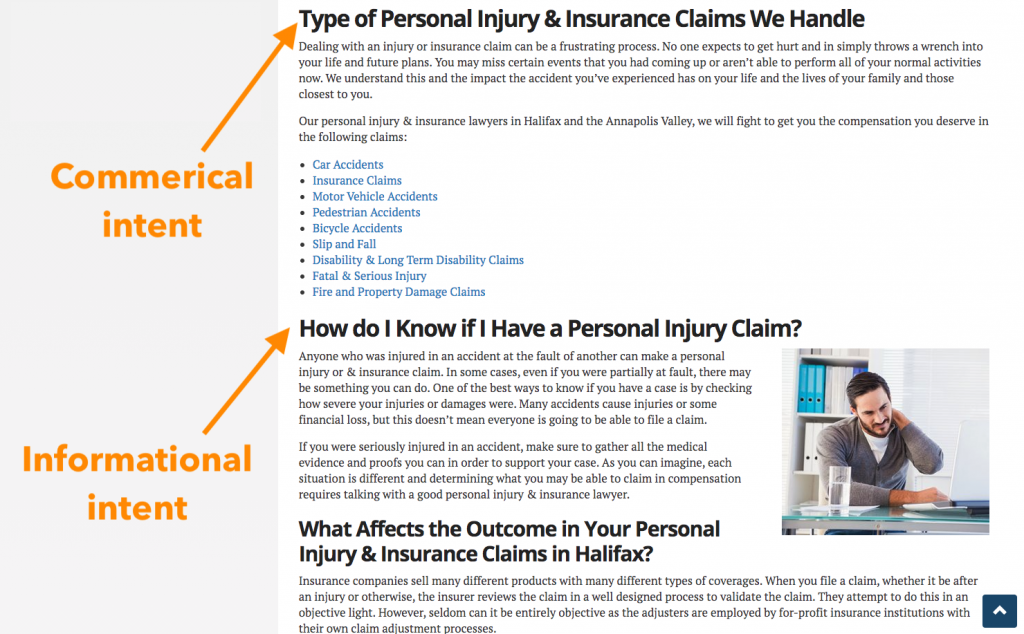
Your target personal injury keywords are going to be primarily transactional. However, an excellent technique to use to ensure top rankings is to create practice area pages that satisfy multiple searchers’ intents. On top of the transactional intent and accompanying content you will write for this intent type, add a long FAQ section as well as information on the injury/accident claims process in your jurisdiction and state.
Create the ultimate page that answers all of the information a user could want to know about their type of personal injury case as well as the more sales-oriented copy that communicates how your law firm is different and how you handle your clients’ cases.
6. Add keywords throughout page content
Keywords are important for Google to understand what your page is about. It provides relevance to both search engines and their users. Using your target keywords throughout your content is imperative to ranking, however do not engage in “keyword stuffing”.
Instead use your target keyword and close-variants in the following places:
- Your title tag
- Permalink / Page URL
- H1 tag
- First sentence or paragraph
- Meta description
- First subheader (H2) after the H1 (use a variant)
- Use other related keywords in subsequent headings
- Use LSIs (synonyms) throughout the content
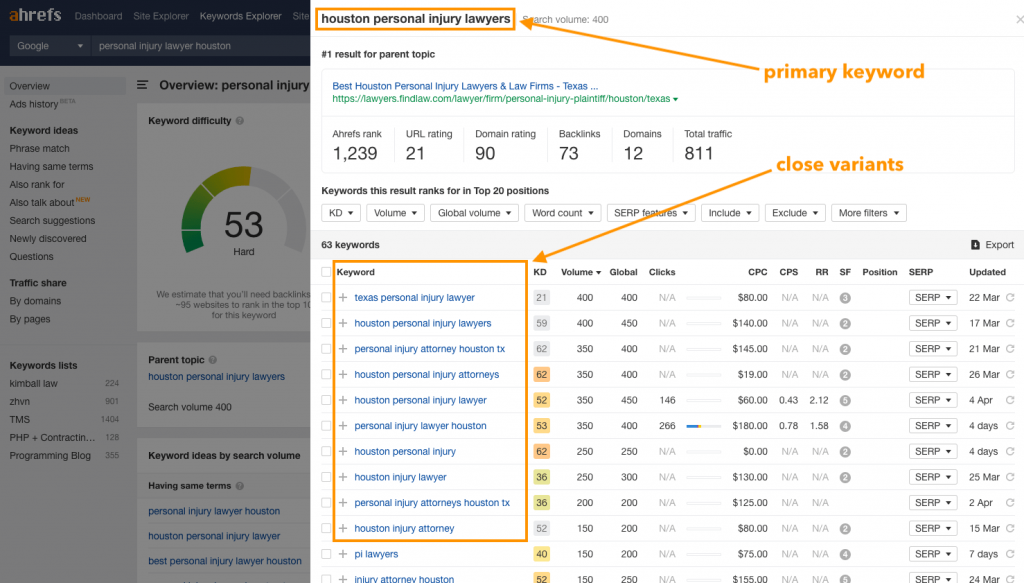
Keyword density used to be more of a deal in SEO. There’s no strict standard anymore, but we recommend that density should be about 1-3%. Before concerning yourself with density, prioritize keyword placement (as listed above) and make sure that your content reads naturally.
7. Add Schema markup to all pages
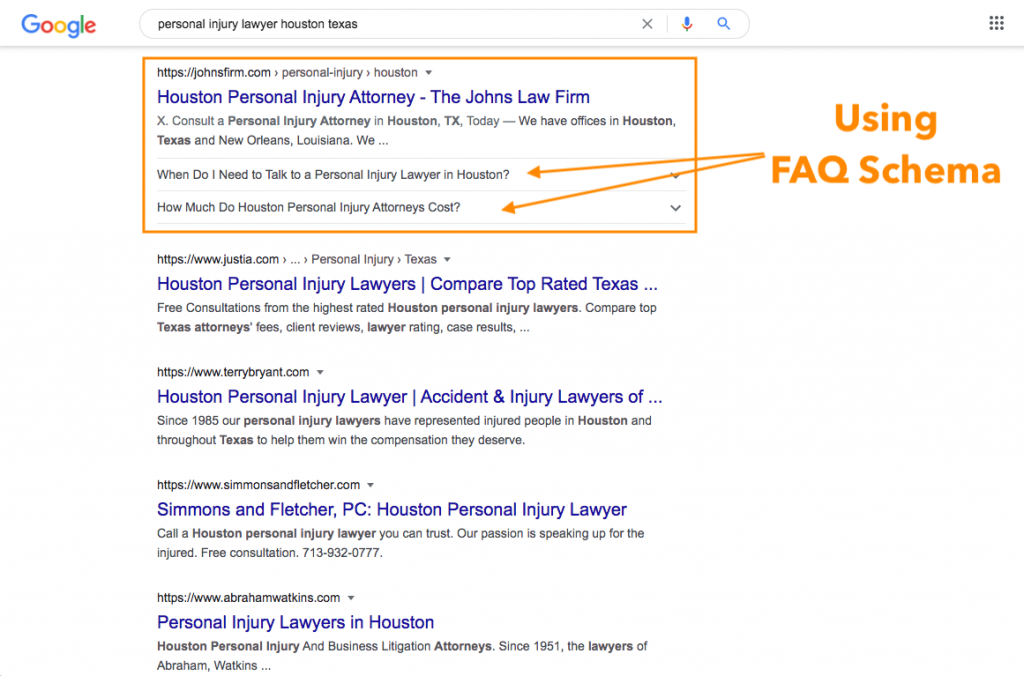
Schema markup helps search engines understand the fundamentals of your website and organization. The most common type of markup that every law firm’s website should have is either the LocalBusiness or LegalServices schema markup. LegalServices is more specific and inherits the same properties of the LocalBusiness markup and is therefore the recommended type to use. You can use this LegalService schema generator tool for your website.
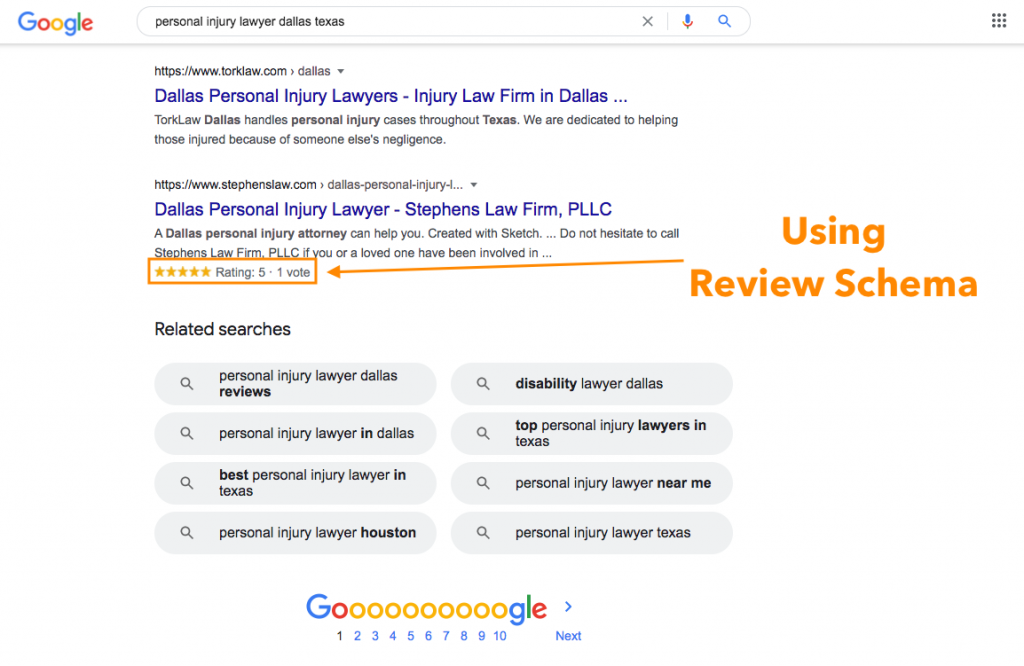
Beyond that, there are some other notable types of schema you can use that will either help rankings or make your listing stand out in the search results:
- Review Schema
- FAQ Schema
- Webpage Schema
- BlogPost Schema
- Author Schema
8. Nail down your NAP
Your Name, Address, Phone number (NAP) consistency is a fundamental part of building Google’s confidence of your business. Your NAP info is posted on your website (typically on the contact page and in the footer) as well as your schema markup, and many online business and legal directories.
Make sure that your NAP info is consistent and exactly the same everywhere your law firm’s information is posted online.
Many times when we work with a firm or solo practitioner, directories contain erroneous NAP details or obsolete office addresses or phone numbers. Make a list of all examples found and start correcting these listings.
9. Optimize your GMB listing
Your Google My Business listing and how well it’s optimized is the primary factor for ranking your law firm in the local map pack results. Make sure that all relevant fields are filled out, high-quality images of lawyers and your office location are present and primary and secondary categories are filled out.
There are many other details that go into a properly optimized Google My Business listing, so make sure to check out our guide on Google My Business for Lawyers for a detailed, step-by-step walkthrough of how to setup and optimize your GMB listing(s).
10. Remove duplicate and thin content
Duplicate and thin content are ranking killers for not only the pages with the content in question, but your site as a whole.
These are pages that law firm marketing agencies and legal content writers are commonly guilty of creating. When this happens, the person or agency in charge or the firm’s content will typically write a main page for the injury attorney’s primary keyword and location they serve (i.e. a city or state). When it’s time to write subsequent pages for other locations, the content is a simple derivative of the original page. The biggest change is usually the new local keyword they target.
This has a number of effects with an overall negative impact on your rankings:
- The site as a whole might be perceived as lower-quality since the thin or duplicate content offers no unique value to the users and passes these signals on to other pages.
- More valuable pages might not receive proper attention as there is a lot of thin content for Google to crawl.
- Google might treat similar or duplicate pages as one (canonicalization) and potentially result in none of them ranking.
By culling and consolidating your content, you make your site’s remaining content more unique and more valuable to users and search engines. If you clean house, you might see a notable boost in rankings.
11. Build lots of citations
As briefly mentioned earlier, citations are an essential part of building your online presence and trust with Google. Google and other search engines want to return the very best results to searchers. They have many signals they rely on when it comes to queries related to local businesses and local searches, including citations. As a general rule of thumb, the more prominent your firm is online, the more search engines can learn and understand about your business and hence are able to build more confidence in the legitimacy of your law firm.
Here’s a list of the top 50 U.S. local directories and citation sources you can use to start building your business’s prominence online.
12. Boost engagement and pageviews
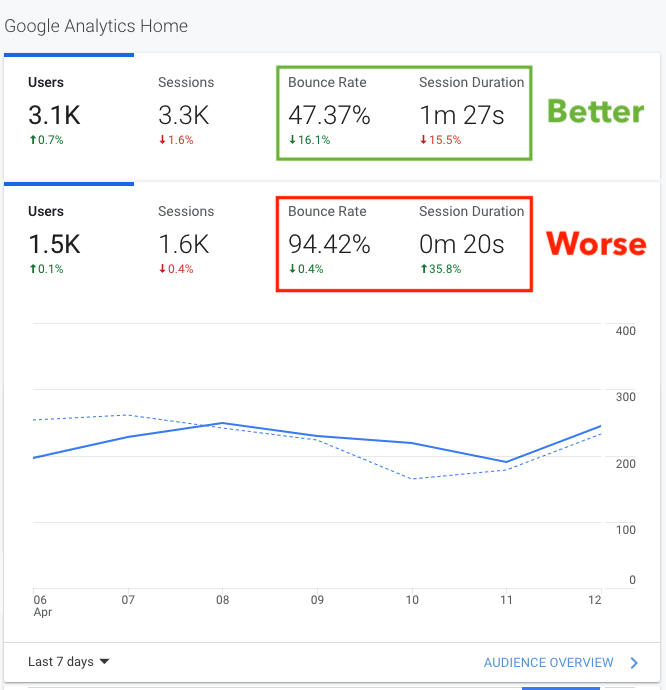
Google cares about user experience and therefore goes to great lengths to measure behavioral signals on websites that are used to infer user experience. Some of these metrics include bounce rate (% of users that left the site after only visiting a single page) and dwell time (the time spent on a page or website).
All else being equal, it is better to have lower bounce rates and higher dwell times.
So how do you accomplish this?
Make your site as engaging as possible.
There are many ways to go about improving these metrics. However, the best way to keep this task simple is by focusing on providing richer content and enhancing the page experience.
Rich content comes in many forms such as lists, multi-page guides and videos will increase dwell time.
Inter-linking pages and adding helpful, relevant navigation to pages will increase the chances of visitors clicking through to other pages, hence lowering your bounce rate and by extension often increasing dwell time. Adding related articles in the sidebar or bottom of the page will increase your pages/session figure, which is more or less, inversely proportional to bounce rate.
